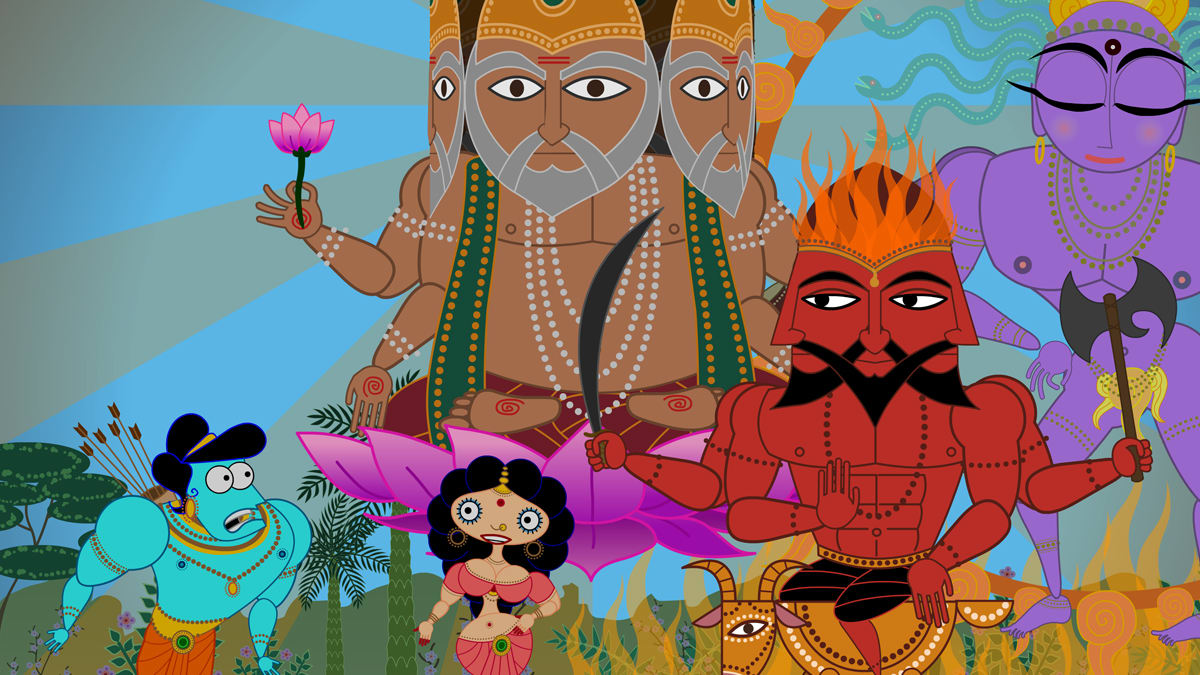Summary
Sita and Rama, figures from the Vedas and Upanishads, are banished to a wild land of demons and monsters. When Sita is kidnapped by the king of the Rakshasa, Ravana, Rama must rescue her, but will he believe that she remained faithful during her stay with Ravana.
Not Exactly a Review
“Sita Sings the Blues” is a film by Nina Paley. With this film, Paley has managed to do several things by which I, as an independent film maker, am both impressed and feel compelled to recommend to others.
The first is that the animation is all done solely by her. Granted it isn’t always flashy or complex but considering that it was all done by one person and obviously taking advantage of the computer’s ease of use, it is astonishing what one person can produce today. The hours it must have taken to complete this work will never be known as I am sure they were countless and frustrating.
The next thing is the origination of the concept for this work. It is always bold to tell a story which shows how you were hurt and how you may have been a little silly, but then to couch that honesty in an ancient mythology from another culture and risk accusations of appropriation or misuse takes even more courage.
The last thing I admire about this film is that Nina Paley has managed to stand by her principle’s. I don’t know whether the chicken or egg came first with this film but the film uses music by Annette Henshaw, a 1920’s and 30’s singer, which Paley does not own the rights to. However, Paley doesn’t believe in copyright law as it is currently used in America and has thus opted to use the music regardless.
Normally I would find this reprehensible but she has stuck to her guns on this one and has even refused to copyright or charge for “Sita Sings the Blues.” She encourages people to use her artwork in anyway they wish because she believes that all art belongs to everyone and all art is derivative. I don’t agree with all of her philosophical points on this but I do admire the tenacity it takes to commit yourself to a set of values that might cost her an easy livelihood based on licensing, distributing, and merchandising rights.
Bravo!
The Film Itself
So what about the actual film?
It’s good. Some of the scenes and character actions linger a bit longer than I personally like and no one would confuse this film for any sort of high budget animation project but it has some interesting things to say about religion and how we understand it as well as relationships and male/female dynamics.
Overall though, the main reasons to see the movie are the interesting copyright stance Nina Paley has taken and the creativity of the film’s concept.
It is one of the closer examples I have seen in film of true folk art, not corporatized or mass marketed. Just one person telling her story in the context of a greater story of humanity. When I call it true folk art, I mean it as a high complement and I feel reasonably certain that the director would consider it so, as well.
Review Written By:





